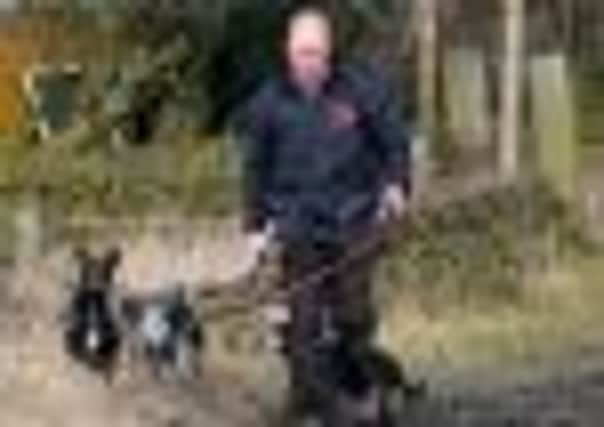Marksman seeks new quarry


But hunting them has been Philip Bastey’s sport for 30 years. And for some reason, he says, he has run into a shortage.
“I don’t know exactly what has happened,” he said last week. “But up until a couple of years ago, wherever I went, an average catch of 50 was almost guaranteed.
Advertisement
Hide AdAdvertisement
Hide Ad“Some days it might only be 35, but once a month it would be more than 100. Then last year, it was down to 20 a day. Now it is sometimes four or five.”
Mr Bastey, 45, leaves it to the rest of us to offer explanations. He simply wants more challenges, for him and his eight dogs which are Patterdale-whippet crosses.
“If you have got a real rat problem, I’m interested.”
The trouble is, he says, people are understandably suspicious of men with dogs who turn up offering to poke around the premises for rats.
In his case, he is not even looking for expenses. He already has a job as a greenkeeper at South Bradford Golf Club. But ever since he was nine, he has been hooked on ratting.
Advertisement
Hide AdAdvertisement
Hide Ad“I saw this film called Where The Red Fern Grows, he remembers. “It was about a young lad in America who got two Redbone Hounds and went hunting raccoon.
It made me get a dog. Where I grew up, in Pudsey, there weren’t even many rabbits to go after. But you could always find rats.
“It became like an obsession and still is. You can class it as pest control, but to me it is hunting.”
Nowadays, he has his own smallholding at Northowram, between Halifax and Bradford. But three times a week, in winter, he and a mate, Nigel Harrison, will take three or four dogs and a couple of light guns – probably an airgun or a 9mm shotgun known as a “garden gun” – and head off.
Advertisement
Hide AdAdvertisement
Hide AdThey will spend a day or night of hunting on one of the dozen or so farms which have them in on a regular basis.
This is usually because they do not want to use poison for one reason or another.
Some are visited only once a year or so – a poultry farm when the flock is changed, a pig farm when the sheds are cleared for restocking, a beef farm when the winter quarters are emptied, and so on.
In summer, the rats scatter into the fields and hedgerows and nettle beds and are hard to find. This is when the ratters go after rabbits or squirrels instead.
Advertisement
Hide AdAdvertisement
Hide AdAt harvest time, the rats start to head back indoors, with their new offspring, and find places under feed troughs or under the concrete bases of sheds.
October to May is when the ratter is mainly required and Mr Bastey and his crew have been called in from as far away as Liverpool, Sheffield, Goole and Church Houses, in the heart of the North York Moors.
“There is a lot of propaganda about how rats will take over your house, but they are very adaptable,” he says.
“They swim, they jump, they climb ... you quite often find them in trees.
Advertisement
Hide AdAdvertisement
Hide Ad“I quite admire them in a way. They do carry diseases but you rarely see them with fleas, whereas every rabbit I have ever seen is full of fleas.”
One of his customers, Rosemary Charnock, who runs a smallholding in the Halifax area, said: “I’m actually a bit of an animal rights person.”
But anyone with livestock has the odd problem with rats and Philip and his dogs are by far the quickest and kindest answer.
“They even caught a mink here once, which explained what had been happening to my chickens.”
Contact Philip Bastey on 079332 943344.
Advertisement
Hide AdAdvertisement
Hide AdWhere the Red Fern Grows is a children’s novel by Wilson Rawls, about a boy who buys and trains two Redbone Coonhounds in the Ozark highlands of Oklahoma. It is a popular middle-school reading book and has twice been made into a film. The one Mr Bastey saw was released in 1974. A remake came out in 2003.